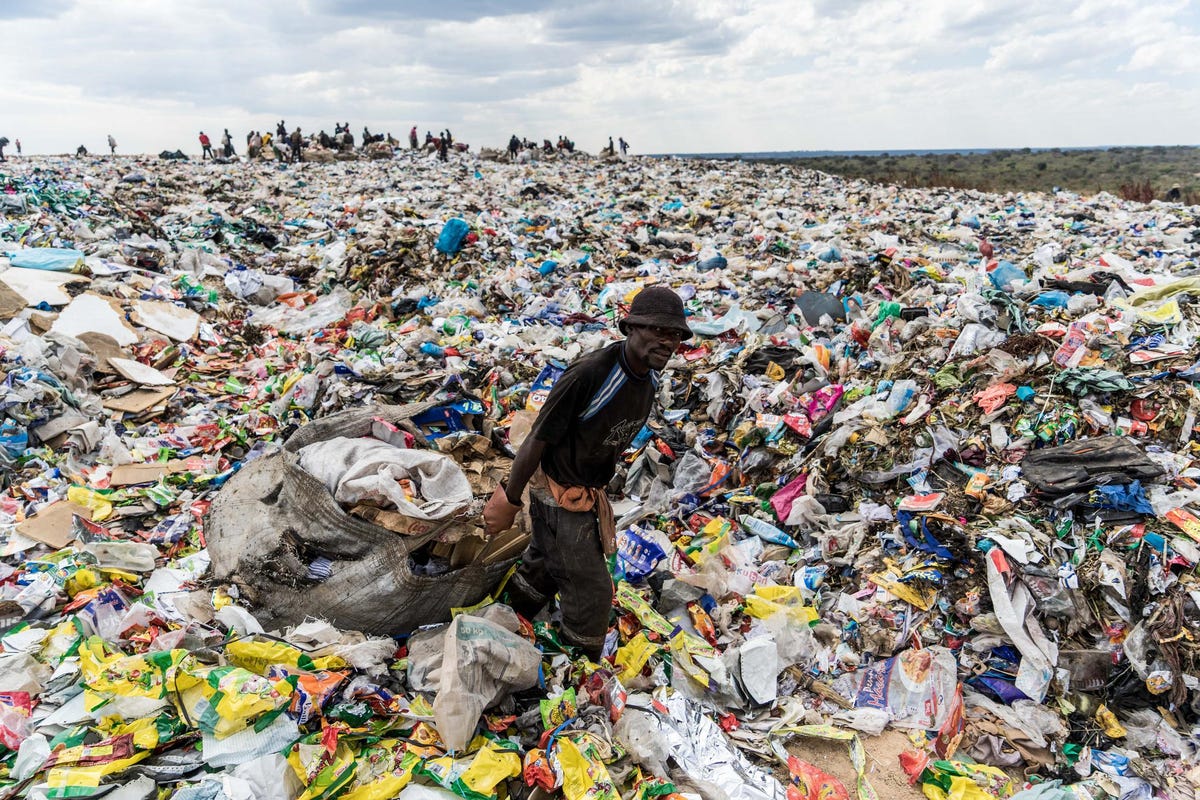
A team of Chinese scientists has converted a common type of plastic into useful materials using an inexpensive process, raising hopes that the method could be used to turn plastic waste into valuable products at a large scale.
Only 9% of plastic waste ever created has been recycled, in part because the current cost of recycling plastics outweighs any financial return. As a result, it is estimated that one garbage truck’s-worth of plastic enters the world’s oceans every minute.
But, using a catalyst made from common metals, researchers at Tsinghua University in Beijing have converted samples of PET plastic (full name polyethylene terephthalate) into commercially useful chemicals, along with hydrogen which can be used for fuel.
In a paper published in Nature Communications, the team revealed the method can yield commodities worth $3,000 from one ton of waste PET. That compares very favorably to a current market value for recycled PET of about $350-400 per ton.
By developing an economically viable process for dealing with the material, the research appears a promising solution in the fight against plastic waste.
“Our team was excited when we finally obtained the pure and crystalline commodities from PET plastic,” Haohong Duan, a professor of chemistry at Tsinghua University in Beijing, told me. “This result demonstrates the feasibility of transforming waste into valuable products. This achievement encourages us to further optimize this technology and explore new reaction routes to expand the variety of valuable products.”
“In my view, our process can contribute to reducing the burden of waste plastic,” he said.
PET is the most abundant polyester plastic, with some 70 million tons manufactured each year. It is commonly used to make such items as plastic bottles, which a recent study found make up 12% of all plastic trash found within ocean environments.
About 300 million tons of plastic trash are produced annually, of which at least 8.8 million tons end up in the ocean. Waste plastics cause multiple harms to humans, plants and animals, some of which are not yet understood.
The new process breaks PET plastic down into three useful substances: the first, called potassium diformate, or KDF, has commercial uses as a safe replacement for antibiotics as a growth promoter in animal feed; next, the process yields terephthalic acid, or PTA, which is used to make coatings and resins for metal components; lastly, the process yields a small amount of hydrogen, which can be used as a fuel.
Duan explained that cost was the major hurdle preventing the more widespread adoption of existing forms of recycling, upcycling and separation of plastics. But the cost effectiveness of the new process was likely to become more attractive as it is refined. And as energy grids decarbonize and electricity prices drop, such processes should become cheaper still.
Plastic waste washes up on a beach in Koh Samui, Thailand. Environmental groups say tackling the … [+]
AFP via Getty Images
“Generally, the costs of process and revenues of products are the main obstacles determining the industrial feasibility of this technology,” Duan told me. “The former mainly depends on the cost of input chemicals, facility cost, and electricity price, in which the cost of feed stock is relatively stable. The facility cost can be reduced by improving the efficiency of the catalyst and optimizing of the reactor. From an electricity cost perspective, renewable prices continue to plummet. This cost decrease in renewable electricity provides an optimistic and aggressive goal for electrocatalytic technologies.”
Duan and colleagues therefore view waste PET as a valuable resource.
Yet PET is just one of seven main categories of plastic, and even if such a process sees widespread industrial implementation, tackling the mountainous plastic crisis will require a multi-pronged approach. It is contingent upon nations to produce less plastic in the first place, but environmental and legal groups warn that fossil fuel companies, faced with falling demand for their products as energy sources, are gearing up for a shift towards producing massively more plastic.
For this reason, multiple nations and firms have called for the introduction of a new plastic pollution treaty, to curb both the production and use of plastics. Yet major plastic-producing states such as the U.S. have resisted calls to support such an agreement, likely a result of intense lobbying from the oil and gas sector.
